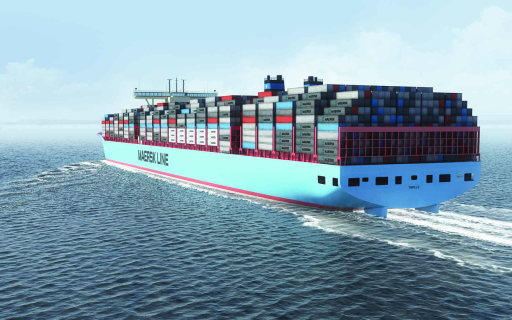The Shifting Landscape of Global Freight Transport
Growing Complexity in Supply Chains
Global trade has expanded dramatically in recent decades, increasing the demand for faster, more flexible, and more reliable freight transport. Businesses now require transportation systems that can move goods efficiently across various regions, time zones, and terrains. This has driven innovation in logistics, especially in how cargo is transferred between modes of transportation. Intermodal Freight has emerged as a transformative solution in this evolving landscape, reshaping how goods travel from origin to destination.
Environmental and Economic Pressures
With increasing fuel costs and global emphasis on reducing carbon emissions, shippers and logistics providers are reevaluating traditional transport methods. Intermodal Freight offers an economically and environmentally sustainable alternative by optimizing transport routes and combining the strengths of multiple transportation methods. It significantly reduces fuel consumption and emissions by relying on rail and sea for long hauls, while still offering last-mile flexibility through trucks.
Advantages of Intermodal Freight Over Traditional Shipping
Enhanced Route Flexibility
Intermodal Freight enables the seamless movement of goods using a combination of rail, truck, air, and sea transportation without requiring the direct handling of cargo when switching modes. This allows shippers to tailor routes to best meet cost, time, and service requirements. The flexibility inherent in Intermodal Freight can lead to improved service reliability and wider geographic coverage.
Cost Savings and Efficiency
Cost optimization is one of the strongest advantages of Intermodal Freight. Rail and sea transportation tend to be more fuel-efficient and cost-effective over long distances compared to road transport. By leveraging the cost advantages of each mode, companies can reduce overall freight spend. Intermodal Freight also reduces reliance on single-mode networks that are prone to congestion and rate volatility.
Technological Integration in Intermodal Freight
Smart Tracking and Real-Time Visibility
Modern Intermodal Freight systems utilize GPS and IoT-based technologies to provide real-time visibility of cargo. These systems enhance supply chain transparency and give logistics managers greater control over delivery schedules and potential disruptions. By integrating advanced tracking, Intermodal Freight boosts reliability and customer satisfaction.
Automation and Data Analytics
The use of AI-driven data analytics in Intermodal Freight allows for route optimization, predictive maintenance, and performance forecasting. Automation technologies in container handling and warehousing further reduce human error and enhance efficiency. These innovations ensure Intermodal Freight continues to evolve as a modern and intelligent logistics strategy.
Environmental Sustainability of Intermodal Freight
Reduced Carbon Footprint
One of the key reasons Intermodal Freight is gaining momentum is its positive impact on environmental sustainability. Rail transport emits significantly fewer greenhouse gases per ton-mile than trucking. By shifting long-distance freight to rail and sea, companies can drastically cut emissions. Intermodal Freight plays a crucial role in helping organizations meet their sustainability goals.
Regulatory Compliance and Green Certifications
Many regions have implemented stricter emissions and fuel efficiency regulations. Intermodal Freight aligns well with these standards, helping companies avoid penalties and qualify for green certifications. This compliance not only benefits the environment but also improves brand image among eco-conscious consumers and partners.
Scalability and Adaptability of Intermodal Freight
Handling Volume Growth
Intermodal Freight systems are built to accommodate growing shipping volumes without significantly increasing operational costs. Modular infrastructure, like standardized containers and intermodal terminals, allows logistics providers to scale up without major disruptions. This scalability makes Intermodal Freight a future-proof option for global supply chains.
Versatility Across Industries
From automotive parts to consumer electronics and perishable goods, Intermodal Freight serves a wide range of industries. Its adaptability to various cargo types and shipping requirements makes it an ideal choice for businesses seeking efficient, secure, and timely delivery. With minimal cargo handling during transitions, product damage is significantly reduced.
Strategic Role in Global Logistics Networks
Optimizing Hub-and-Spoke Models
Intermodal Freight fits perfectly into hub-and-spoke logistics frameworks, which dominate global shipping operations. It allows for efficient consolidation and distribution of cargo at central hubs, reducing last-mile delivery times and costs. This enhances operational efficiency and makes better use of transport infrastructure.
Enhancing Supply Chain Resilience
In times of crisis, such as natural disasters or geopolitical disruptions, Intermodal Freight offers alternative routing options that single-mode systems may lack. Its multimodal nature supports continuity in the face of infrastructure shutdowns, labor strikes, or fuel shortages. As supply chains face increasing uncertainty, Intermodal Freight becomes a key tool for risk management.

Strategic Investment and Infrastructure Development
Growth in Intermodal Terminals
Governments and private sector players are investing heavily in intermodal terminals and related infrastructure. These investments are designed to improve cargo handling speeds, reduce bottlenecks, and enable faster transitions between modes. The expansion of intermodal facilities worldwide is accelerating the adoption of Intermodal Freight.
Public-Private Partnerships
Collaborations between public authorities and logistics companies are supporting the growth of Intermodal Freight systems. These partnerships bring together resources and expertise to streamline customs processes, improve intermodal connections, and foster long-term logistics planning. Such cooperation ensures that Intermodal Freight remains a strategic priority in transportation policy.
Technological Advancements and Future Potential
AI and Predictive Logistics
AI-powered systems are transforming Intermodal Freight by enabling predictive logistics. These systems analyze historical and real-time data to forecast delays, optimize routes, and enhance capacity planning. As AI becomes more sophisticated, it will unlock new levels of efficiency and responsiveness in Intermodal Freight.
Integration with Smart Cities and IoT
The integration of Intermodal Freight into smart cities is another exciting frontier. IoT sensors on cargo containers and vehicles enable smarter traffic management and route planning. This connectivity supports sustainability, safety, and real-time adaptation to urban logistics challenges.
FAQ
What makes Intermodal Freight more efficient than traditional shipping?
Intermodal Freight combines the strengths of different transport modes, such as the cost-efficiency of rail and the flexibility of trucks. This reduces costs, lowers emissions, and improves delivery reliability.
How does Intermodal Freight support sustainability goals?
By shifting cargo to lower-emission modes like rail and sea, Intermodal Freight significantly reduces the carbon footprint of logistics operations. It helps companies align with environmental regulations and sustainability targets.
Is Intermodal Freight suitable for time-sensitive deliveries?
Yes. With improved scheduling, GPS tracking, and faster terminal operations, Intermodal Freight is increasingly capable of meeting tight delivery windows while offering superior cost control.
What industries benefit most from Intermodal Freight?
Industries such as retail, manufacturing, automotive, agriculture, and pharmaceuticals benefit from Intermodal Freight due to its adaptability, reliability, and scalability.
Table of Contents
- The Shifting Landscape of Global Freight Transport
- Advantages of Intermodal Freight Over Traditional Shipping
- Technological Integration in Intermodal Freight
- Environmental Sustainability of Intermodal Freight
- Scalability and Adaptability of Intermodal Freight
- Strategic Role in Global Logistics Networks
- Strategic Investment and Infrastructure Development
- Technological Advancements and Future Potential
- FAQ



